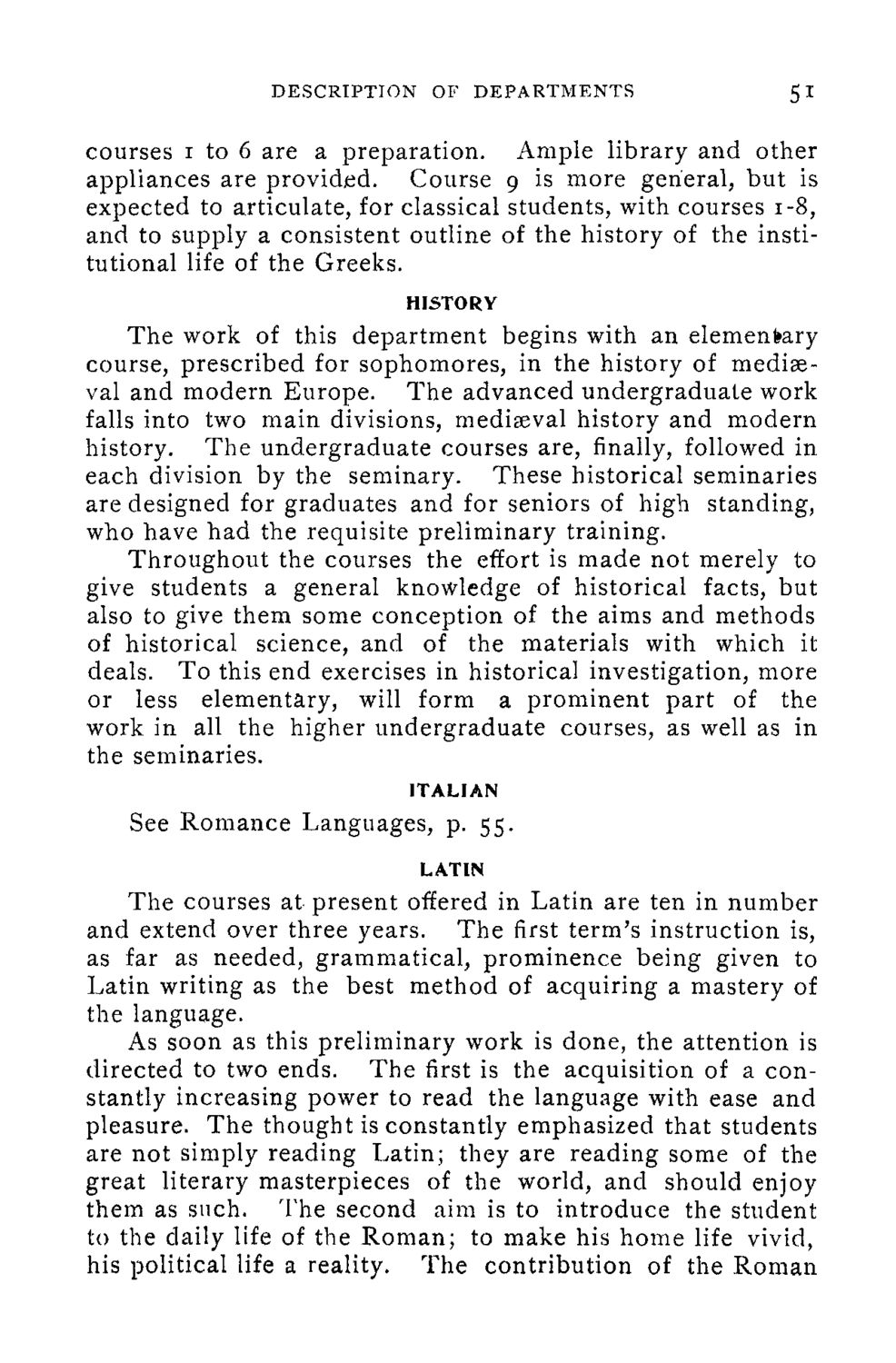| |
| |
Caption: Course Catalog - 1896-1897
This is a reduced-resolution page image for fast online browsing.

EXTRACTED TEXT FROM PAGE:
DESCRIPTION OF DEPARTMENTS 51 courses i to 6 are a preparation. Ample library and other appliances are provided. Course 9 is more general, but is expected to articulate, for classical students, with courses 1-8, and to supply a consistent outline of the history of the institutional life of the Greeks. HISTORY The work of this department begins with an elementary course, prescribed for sophomores, in the history of mediaeval and modern Europe. The advanced undergraduate work falls into two main divisions, mediaeval history and modern history. The undergraduate courses are, finally, followed in each division by the seminary. These historical seminaries are designed for graduates and for seniors of high standing, who have had the requisite preliminary training. Throughout the courses the effort is made not merely to give students a general knowledge of historical facts, but also to give them some conception of the aims and methods of historical science, and of the materials with which it deals. To this end exercises in historical investigation, more or less elementary, will form a prominent part of the work in all the higher undergraduate courses, as well as in the seminaries. ITALIAN See Romance Languages, p. 55. LATIN The courses at present offered in Latin are ten in number and extend over three years. The first term's instruction is, as far as needed, grammatical, prominence being given to Latin writing as the best method of acquiring a mastery of the language. As soon as this preliminary work is done, the attention is directed to two ends. The first is the acquisition of a constantly increasing power to read the language with ease and pleasure. The thought is constantly emphasized that students are not simply reading Latin; they are reading some of the great literary masterpieces of the world, and should enjoy them as such. The second aim is to introduce the student to the daily life of the Roman; to make his home life vivid, his political life a reality. The contribution of the Roman
| |